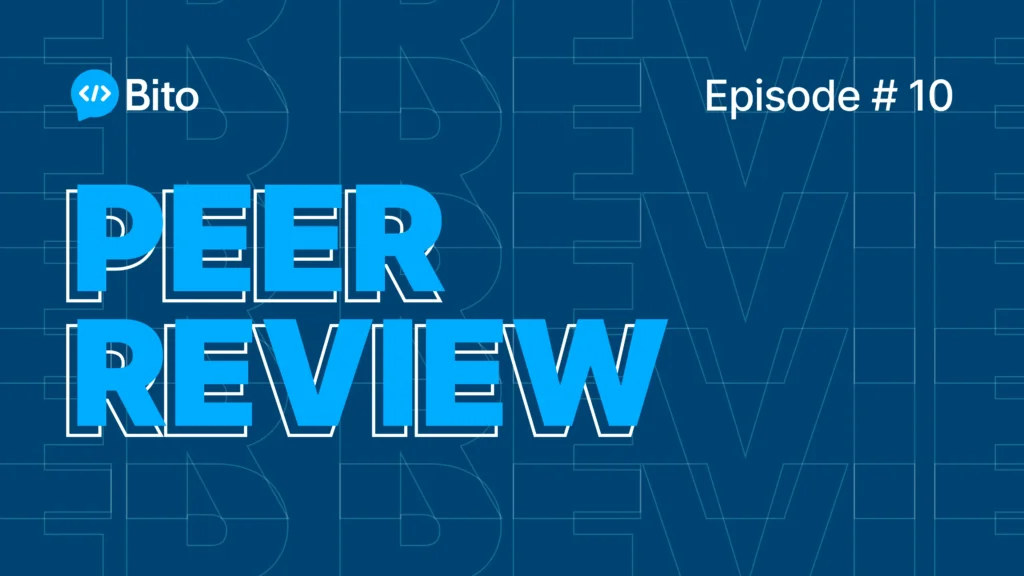Last week, I wrote a blog comparing GitHub Copilot vs Cursor AI. The next natural question is Cursor vs Windsurf, since these two AI powered code editors are among the most talked about tools in 2025.
Both aim to speed up coding, improve context awareness, and bring agent style assistance directly into your workflow.
Cursor is built on top of VS Code and is known for depth, manual control, and advanced context management across large projects.
Windsurf focuses on speed, multi repository setups, and an agentic approach that handles context and code generation automatically.
In this blog we will compare Cursor vs Windsurf across pricing, features, IDE integration, AI models, multi file editing, context handling, collaboration, and performance, so you can decide which one fits your workflow best.
Overview of each tool
Cursor
Cursor is an AI powered code editor built on top of Visual Studio Code.
It keeps the familiar VS Code interface while adding advanced AI capabilities.
Developers can use Cursor for inline code completions, multi-line generation, debugging support, and automated fixes.
One of its strongest features is context management. You can manually add documentation, git commits, or even web pages to shape how the AI understands your project.
Cursor also supports Composer mode for complex multi file editing, experimental bug finding, and auto commit messages.
Since Cursor is fully compatible with VS Code extensions, it feels familiar while offering deeper AI assistance.
Windsurf
Windsurf is another leading AI IDE, designed with speed and automation in mind.
Unlike Cursor’s manual context setup, Windsurf defaults to an agentic approach.
It automatically indexes your repositories, selects relevant code, and generates updates directly to disk.
Windsurf integrates with VS Code, JetBrains IDEs, and IntelliJ, making it suitable for multi repository and multi module projects.
Windsurf is optimized for performance with a lighter memory footprint and fast response times, especially on Linux.
It also focuses heavily on team collaboration, offering git aware AI suggestions, centralized billing, role based access control, and enterprise grade security.
Both Cursor and Windsurf are AI first development environments, but the focus is different.
Cursor focuses on giving developers more control over how context is set up, while Windsurf leans on automation with agentic indexing.
Feature and pricing comparison
When developers compare Cursor vs Windsurf, the first place to look is pricing and features. Both AI powered IDEs bring strong capabilities, but the way they package and deliver them is different.
Here is a complete comparison table of Cursor and Windsurf in 2025:
| Category | Cursor | Windsurf |
| Pricing Plans | Hobby (Free): 2,000 completions + 50 requests per month. Pro: $20 per month with unlimited Tab completions and API credits. Teams: $40 per user per month. Ultra: $200 per month. Enterprise: Custom pricing. | Free: 25 prompt credits per month, unlimited Fast Tab. Pro: $15 per user per month with 500 credits and advanced models. Teams: $30 per user per month. Enterprise: $60 per user per month with 1,000 credits and advanced security. |
| IDE Integration | Based on VS Code, supports all VS Code extensions | Works with VS Code, JetBrains IDEs, IntelliJ, stable for multi repo and multi module setups |
| AI Models | GPT-4o, Claude Opus, Claude Sonnet, Gemini | Claude 3.5, Gemini, SWE-1 custom agentic model, support for self-hosted AI models |
| Code Completion | Inline suggestions, multi-line completions, bug fixer | Inline suggestions, multi-line generation, human-like summaries, cross repo completion |
| Agentic Mode | Composer mode for manual multi file context generation, not agentic by default | Agentic mode is default, automatically indexes code, runs commands, writes generations to disk in real time |
| Multi Repo Support | Best for single repository context, limited multi repo capability | Advanced multi repo support with hierarchical configurations |
| Collaboration | Solo developer focus, no shared prompt history, experimental multiplayer | Git aware AI suggestions, team review tools, centralized billing, RBAC, SSO |
| Extensibility | Full VS Code plugin compatibility | Full VS Code plugin compatibility plus custom tool and service integration |
| Enterprise Ready | Privacy mode, SOC 2 certified, limited admin features | Enterprise-grade with RBAC, SSO, hybrid deployment, advanced security, volume discounts |
| Performance and Speed | Smooth for small and medium projects, occasional lag in large codebases | Optimized for speed, lighter memory footprint, highly efficient for large projects |
| Context Management | Strong, supports docs, web, git branches, commits | Basic, relies on automatic agentic indexing |
| Terminal AI | Built-in terminal tools, hijacks Command+K | AI powered terminal with natural language command generation |
| Commit Messages | Auto-generated, customizable with rules | Not explicitly mentioned |
| Offline Mode | Limited | Planned |
Feature by feature breakdown
Pricing plans
Cursor offers a free Hobby plan with 2,000 completions and 50 requests per month. The Pro plan is $20 per month and includes unlimited Tab completions with $20 in API credits. Teams is $40 per user per month, Ultra is $200 per month, and Enterprise is custom.
This structure makes Cursor attractive for individual developers who want predictable pricing and access to advanced features.
Windsurf starts with a free plan that includes 25 prompt credits and unlimited Fast Tab completions. Pro is $15 per user per month with 500 credits and access to advanced models. Teams is $30 per user per month, and Enterprise is $60 per user per month with 1,000 credits and advanced security controls.
Windsurf’s credit model can scale more smoothly for teams, especially when combined with enterprise features like role based access control and SSO.
IDE integration
Cursor is based on VS Code and runs almost every VS Code extension natively. If you are already comfortable with VS Code, the transition feels seamless and you can continue using the same plugins and themes.
Windsurf integrates with VS Code but also extends support to JetBrains IDEs and IntelliJ. It is designed to handle multi repo and multi module projects, which makes it well suited for larger organizations with diverse setups.
AI models
Cursor supports GPT-4o, Claude Opus, Claude Sonnet, and Gemini. This gives developers flexibility to choose between models based on speed, accuracy, or reasoning ability.
Windsurf includes Claude 3.5, Gemini, and a custom SWE-1 model built for agentic workflows. It also allows support for self-hosted AI models, which is useful for teams that want tighter control over model usage and security.
Agentic mode
Cursor uses Composer mode for multi file edits and context generation, but this mode is not enabled by default. Developers must manually set up the context.
Windsurf defaults to an agentic approach. The AI automatically indexes relevant files, selects code, runs commands, and writes generations directly to disk in real time. This makes Windsurf feel more automated for everyday use.
Multi repo support
Cursor works best with a single repository where you can manage context manually. Multi repo setups are possible, but less streamlined.
Windsurf is designed for multi repo projects from the start. It supports hierarchical configurations and can handle cross repository dependencies without extra setup.
Code completion
Cursor provides inline suggestions, multi-line completions, and a built in bug fixer. It is strong at generating code across single repositories where you can guide the context.
Windsurf goes further with inline suggestions, multi-line generation, and human like code summaries. It also enables cross repo completions, which makes a big difference in multi repository projects.
Collaboration
Cursor focuses on solo developer workflows. It does not include a shared workspace or synced prompt history, although multiplayer editing is being tested in beta.
Windsurf is built with teams in mind. It offers Git aware suggestions, edit labeling, team review tools, centralized billing, role based access control, and SSO.
Extensibility
Cursor supports all VS Code extensions, so you can extend functionality with the same ecosystem you already use.
Windsurf also supports VS Code extensions and adds options for integrating custom tools and services, giving teams more flexibility for specialized workflows.
Enterprise readiness
Cursor includes privacy mode and SOC 2 certification, along with some basic admin controls. It is still early stage for enterprise adoption.
Windsurf provides a full enterprise package with RBAC, SSO, hybrid deployment, private model hosting, and volume discounts. It is the stronger choice for larger teams and security sensitive organizations.
Performance and speed
Cursor runs smoothly on small to medium projects, but developers report occasional lag when working with very large codebases.
Windsurf is optimized for performance with a lean memory footprint and better handling of complex projects. It is particularly fast and efficient on Linux.
Context management
Cursor excels at manual context management. You can add docs, web pages, git branches, and commits to shape how the AI understands your codebase. This gives you fine control over results.
Windsurf takes the opposite route, relying on agentic indexing. Context is selected automatically, which reduces setup but also limits manual precision.
Terminal AI
Cursor includes built in terminal tools and uses Command plus K for AI command generation, though this overrides the native clear command shortcut.
Windsurf integrates AI directly into the terminal, letting you describe commands in natural language and run them with less manual typing.
Commit messages
Cursor can auto generate commit messages and customize them using project rules, which saves time in everyday workflows.
Windsurf does not highlight commit messages as a core feature.
Offline mode
Cursor supports limited offline usage, but most features still require connectivity.
Windsurf has offline support planned, though not yet widely available.
Key strengths and best use cases
When you compare Cursor vs Windsurf, it is not about one being strictly better. Each tool has clear strengths depending on how you work and what your team needs.
Where Cursor is stronger
- Comprehensive AI assistant: Cursor covers a wide range of developer tasks including refactoring, code generation, debugging, bug finding, commit messages, and diffs.
- Superior context management: You can manually add documentation, git commits, and even web resources to give the AI richer context. This is valuable for large projects where precision matters.
- Advanced features: Experimental tools like auto commit messages and the bug finder make Cursor feel more like a power user’s IDE.
- Familiar setup. Since it is based on VS Code, Cursor feels natural if you already rely on the VS Code ecosystem and extensions.
- Best for: individual developers or small teams who want depth, control, and advanced customization in an AI IDE.
Read next: Best Cursor Alternatives [2025]
Where Windsurf is stronger
- Simplicity and speed. Windsurf keeps the interface clean and is optimized for performance with a lean memory footprint, especially strong on Linux.
- Agentic by default. The AI agent automatically indexes code, gathers context, and runs commands, so you do not have to manually configure it.
- Multi repo support. Windsurf handles multi repository and multi module projects with ease, making it ideal for enterprise setups.
- Team collaboration. With Git aware suggestions, centralized billing, RBAC, SSO, and enterprise security features, Windsurf is built for collaboration at scale.
- Model flexibility. Support for custom and self-hosted AI models gives teams more control over their environment.
- Best for: teams, fast moving projects, and enterprises that need reliable performance, security, and automation across multiple repositories.
In short, Cursor prioritizes depth and manual control, while Windsurf focuses on speed, automation, and team workflows.
Pairing AI coding assistants with AI code reviews
AI coding assistants like Cursor, GitHub Copilot, Windsurf are great at code completion, multi file refactoring, and automating parts of the development workflow. They help you write code faster and reduce boilerplate.
But faster code does not always mean safer code. Bugs, edge cases, and security risks still make their way into pull requests. This is where an AI code review tool like Bito becomes essential.
Bito is an AI code review tool that runs directly inside your IDE or CI pipeline. Instead of predicting your next line of code, Bito reviews the code you or your AI editor already wrote.
With Bito you get:
- Deeper AI code reviews: It looks beyond syntax, catching security issues, performance bottlenecks, and logic flaws.
- Custom rules: You can define custom rules or architectural guidelines, and Bito enforces them automatically across your team.
- Actionable suggestions: Reviews come with clear explanations and recommended fixes, so you do not just see what is wrong, you know how to resolve it.
- Privacy first: It never trains on your private code and offers enterprise-grade controls. Bito is SOC 2 Type II certified. Read more about privacy in our blog secure code review process.
So if you are using Cursor for manual context control or Windsurf for agentic automation, pairing either one with Bito adds the missing safety layer. You get the speed of AI code generation from your editor, and the confidence of AI powered reviews that keep your code production ready.
Conclusion
Cursor vs Windsurf comes down to what you value most in an AI coding assistant.
Cursor gives you manual control, advanced context management, and a familiar VS Code based environment. Windsurf focuses on speed, multi repository support, and team collaboration with agentic automation at its core.
Both tools represent the new wave of AI IDEs in 2025. To make the most of either option, pair your AI editor with a dedicated AI code review tool like Bito.
While Cursor and Windsurf accelerate how code is written, Bito ensures that the code is secure, consistent, and ready for production through deeper reviews, custom rules, and enterprise grade privacy.
We will continue to compare the top AI developer tools to help you make the right choice for your workflow.
Which AI tools do you want us to compare next?






